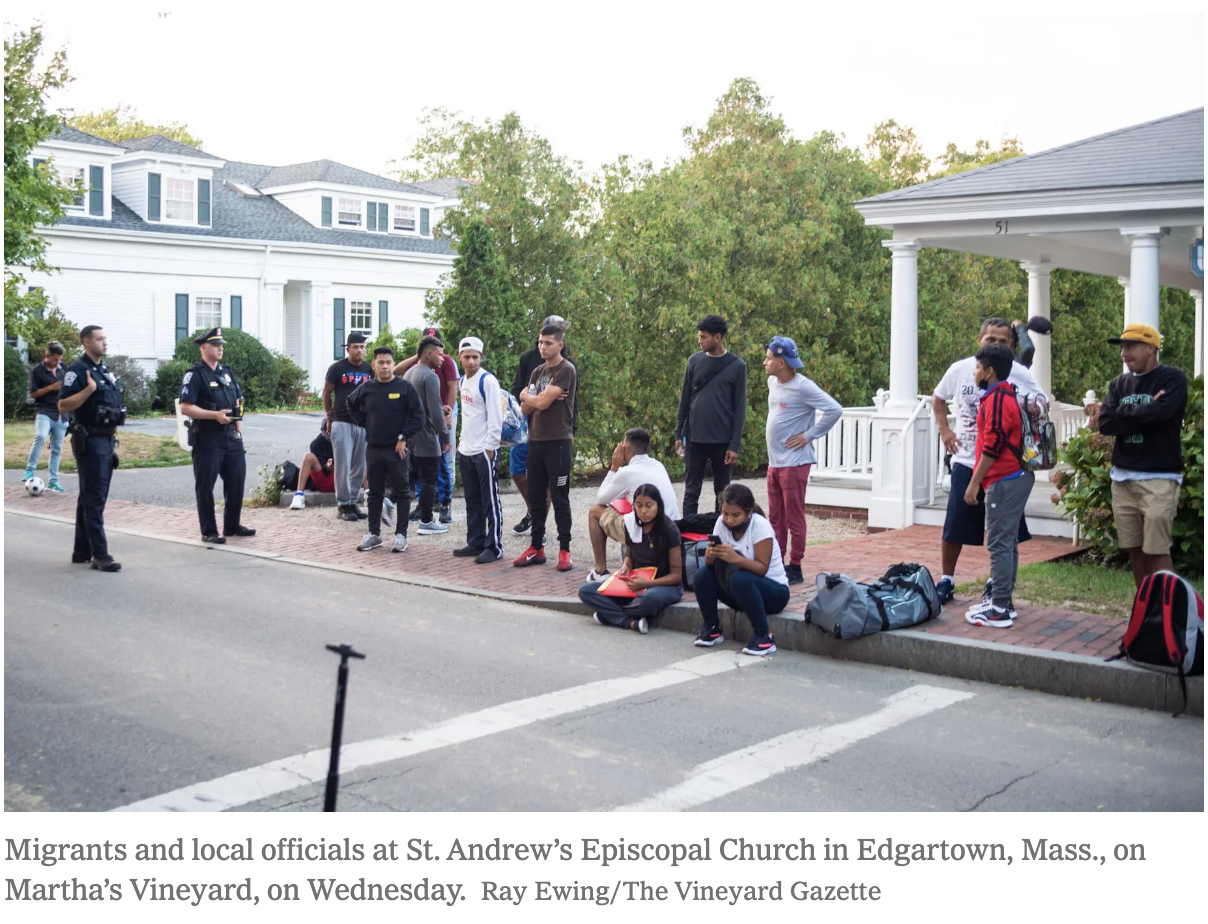Last week, Florida Governor Ron DeSantis chartered two planes to transport about 50 mostly asylum-seeking migrants (the majority of whom are from Venezuela) from Texas to Martha’s Vineyard, Mass. without notifying local residents they were coming. The migrants were told they were headed for other locations on the mainland of Massachusetts to receive well-paying jobs, free housing and transportation, but instead arrived on the island of Martha’s Vineyard. While reputable news outlets stated the facts, the angles and interpretation of the event varied widely depending on the political leaning of the author and outlet – some accounts portrayed DeSantis as cruel for misleading migrants as a political stunt, while others praised DeSantis for being tough on immigration.
The vastly differing coverage of this news event highlights how polarized reporting of our country has become and serves as an example of how our shared reality is fraying. In a tumultuous time of gun violence, war, climate change, racial injustice, and inflation, we need to work together. According to a Stanford study, 85% of those surveyed want more cross-party relations, such as having members of the other party as friends, building consensus, and supporting bipartisan cooperation. But to do that, we need to first start with common ground.
Here are ways to be a savvy news consumer in hopes that we will all spend more time understanding and collaborating.
Seek Fair Balance.
It’s important to first ensure that the outlets you’re consuming news from seek to inform and educate, rather than stir viewers to a specific action or emotion. While there are helpful graphs and infographics that identify where outlets land on the political spectrum, we encourage you to do your own analysis by checking to see whether the article includes both sides of a topic.
Another check you can do is to do a quick Internet search and see how other reputable outlets are covering the news. To have a more well-rounded media consumption diet, consider reading articles from reputable outlets on the other side so you know how others may perceive the event.
Analyze the Language Used.
The words used in an article offer a powerful indication of the leanings of an outlet. In the case of news coverage of the migrants’ arrival to Martha’s Vineyard, right-leaning outlets called people “illegal immigrants” (although asylum seekers are legally allowed to be in the U.S) and described DeSantis’ actions as a “decision”, left-leaning outlets referred to the migrants as “asylum-seekers” and wrote that DeSantis “lured” the migrants as part of a “political stunt” and is using them as “political pawns.”
Look for words that convey actions and people in a specific light. Was there a more neutral term they could have used? It’s important to recognize when you’re being influenced and to identify how that’s taking place.
Aim to Understand.
One of the most important questions to ask is “Why?” when reading an article. Why did Ron DeSantis direct the migrants to Massachusetts? Why Massachusetts? Why are the migrants coming to the U.S? Why does the U.S. grant asylum to people coming from certain countries? What immigration policies could be put in place? Starting from a place of curiosity, rather than judgment is helpful in learning about the situation. Asking the “why” will enable you to critically think through the actions that transpired, rather than make assumptions about the intentions of the person behind the specific action. Seeing why the reporter provided certain information and neglected to share other facts will help you discern which way an article is leaning. It will also encourage a spirit of curiosity so you can seek a more complete and comprehensive understanding of the situation.
In a day and age with search algorithms and news feeds that show us content that will validate our own confirmation bias, the onus is on us to put in the extra effort to better understand the world we live in and the people we live with. By following these tips, you will be well on your way to being a savvy news consumer!


